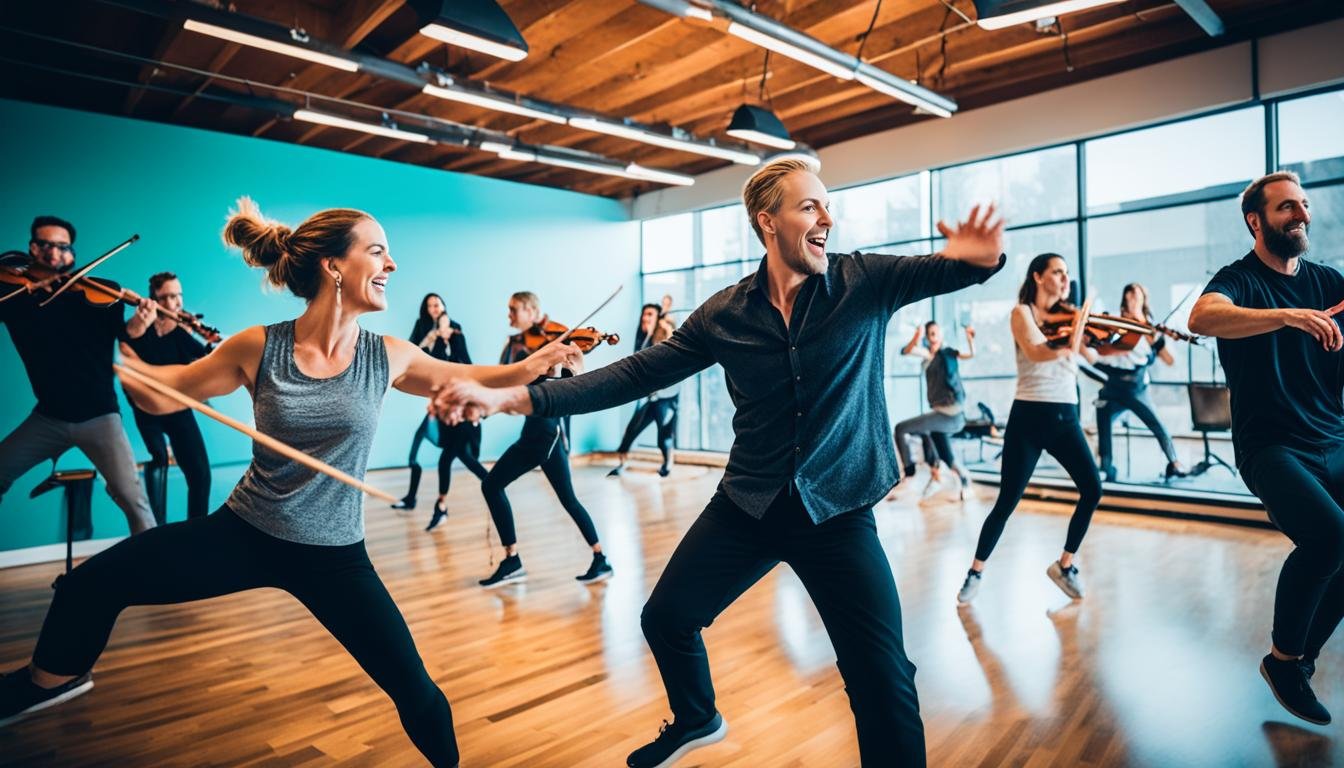In today’s fast-paced and ever-changing world, music and arts education play a vital role in nurturing creativity, fostering skill development, and empowering students to achieve artistic mastery. The dynamics of artistic learning encompass a multidisciplinary approach that combines academic scholarship, creative learning, and the integration of technology to create a comprehensive and enriching educational experience.
Music education forms the foundation of artistic learning, providing students with a platform to explore various musical genres, instruments, and techniques. It cultivates their musical talents, nurtures their passion for music, and instills a love for the arts. Similarly, arts education encompasses a wide range of disciplines, including visual arts, theater, dance, and more, offering students opportunities to express themselves creatively and develop their unique artistic voices.
Through music and arts education, students embark on a journey of discovery and self-expression, honing their creativity, critical thinking, and problem-solving skills. They learn to communicate effectively, collaborate with others, and embrace diverse perspectives. This holistic approach to education not only enhances students’ artistic abilities but also cultivates personal growth, resilience, and a lifelong love for the arts.
The pursuit of excellence in music and arts education goes beyond technical proficiency and extends to the development of well-rounded individuals who can make meaningful contributions to society. By nurturing talent, fostering artistic expression, and empowering students to embrace their creative potential, we can shape the future of music and arts education and inspire generations of artists to reach new heights of accomplishment.
Key Takeaways:
- Music and arts education contribute to the development of skills, creativity, and artistic mastery.
- A multidisciplinary approach enhances the learning experience and fosters holistic growth.
- Technology integration opens up new avenues for creative expression and collaboration.
- Teachers play a crucial role in elevating music education and nurturing artistic development.
- Music and arts education provide platforms for personal growth, emotional well-being, and social connection.
Understanding the Landscape of Music and Arts Education
Music and arts education plays a vital role in fostering creativity, self-expression, and personal growth in students. However, the landscape of music and arts education is constantly evolving, presenting educators, students, and institutions with new trends and challenges to navigate.
One of the significant trends in music and arts education is the integration of technology. Advancements in technology have revolutionized the way students engage with music and arts, offering innovative tools and platforms for learning and expression. From digital composition software to virtual reality experiences, technology has opened up new possibilities for creativity and collaboration.
Another trend shaping the landscape of music and arts education is the shift towards a more multidisciplinary approach. Recognizing the interconnectedness of different art forms, educators are increasingly incorporating cross-disciplinary experiences into their teaching. This approach encourages students to explore connections between music, visual arts, dance, theater, and more, fostering a deeper understanding and appreciation of various art forms.
“The integration of technology and the multidisciplinary approach are transforming the way we teach and learn music and arts,” says Jane Doe, a renowned music educator. “By embracing these trends, we can provide students with a more comprehensive and engaging arts education experience.”
However, with these trends come challenges. One of the significant challenges is ensuring equitable access to music and arts education for all students. Socioeconomic disparities and limited resources often create barriers to quality arts education, disproportionately affecting marginalized communities. Addressing these challenges requires a concerted effort from educators, policymakers, and stakeholders to advocate for inclusive and accessible music and arts programs.
Furthermore, the rapidly changing cultural and societal norms pose challenges to music and arts education. As societies become more diverse, it is crucial to ensure that curricula and teaching practices reflect and celebrate cultural differences. Educators must strive to provide a culturally responsive education that recognizes and values students’ diverse backgrounds and experiences.
To navigate the ever-changing landscape of music and arts education, educators need to stay informed about the latest trends and adapt their teaching practices accordingly. By embracing technology, incorporating a multidisciplinary approach, and addressing challenges related to access and cultural sensitivity, educators can create meaningful and inclusive music and arts education experiences for their students.
The Core of Music and Arts Learning Excellence
In order to achieve excellence in music and arts education, certain core elements must be emphasized. These elements form the foundation for cultivating creativity, critical thinking, passion, persistence, and the integration of multidisciplinary experiences. Let’s explore each of these aspects in detail.
Developing Creativity and Critical Thinking
Music and arts education play a vital role in nurturing and developing creativity and critical thinking skills. By providing students with ample opportunities to explore and experiment with different artistic forms, they are able to broaden their perspectives, think innovatively, and solve problems creatively.
Engaging in activities such as composing music, creating artwork, or performing in plays allows students to think outside the box, express their unique ideas, and develop their own artistic voice. Through this process, they learn to analyze, evaluate, and make informed decisions, thereby enhancing their critical thinking abilities.
Cultivating Passion and Persistence in the Arts
Passion and persistence are vital components of artistic learning excellence. Music and arts education provide the perfect platform to cultivate and nurture these qualities in students.
Through exposure to various art forms, students can discover their passions and develop a deep connection to their chosen art. Whether it’s playing an instrument, painting, dancing, or acting, cultivating passion allows students to stay committed, motivated, and dedicated to honing their skills.
Additionally, music and arts education teach students the value of persistence. They learn that mastery takes time, effort, and practice. Students are encouraged to learn from their mistakes, persevere through challenges, and strive for continuous improvement, ultimately paving the way for lifelong artistic growth.
Empowering Through Multidisciplinary Artistic Experiences
Embracing multidisciplinary artistic experiences is another crucial aspect of music and arts learning excellence. By integrating different art forms, such as music, visual arts, dance, and theater, students gain a broader understanding and appreciation for various artistic expressions.
Participating in multidisciplinary projects allows students to explore the intersections between different art forms, fostering their creativity and encouraging them to think beyond traditional boundaries. This not only enhances their artistic growth but also equips them with transferable skills for future endeavors.
For example, a musician who collaborates with a visual artist on a project can learn valuable lessons in teamwork, communication, and adaptability. Such experiences empower students to think critically, approach challenges from different perspectives, and develop a well-rounded artistic repertoire.
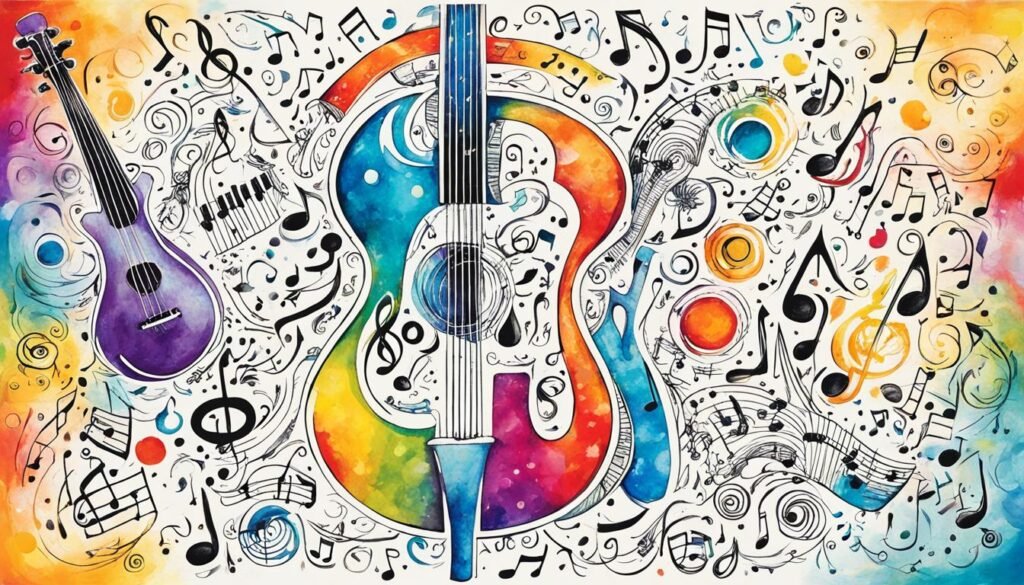
By focusing on developing creativity, critical thinking, passion, persistence, and providing multidisciplinary experiences, music and arts education sets the stage for students to excel in their artistic journeys. These core elements not only prepare them for artistic mastery but also equip them with valuable skills that extend beyond the realm of the arts.
Elevating Music Education: Teachers as Pillars of Artistic Development
In the pursuit of artistic excellence, music education plays a vital role in nurturing students’ talents and fostering their artistic development. Central to this process are the teachers who serve as pillars of support, guidance, and mentorship for aspiring musicians. The impact of a dedicated and inspiring teacher cannot be overstated, as they have the power to shape the artistic journey of their students.
Effective communication is one of the key qualities that make a great music educator. The ability to convey complex musical concepts in a clear and concise manner ensures that students grasp the foundations of music theory and technique. Additionally, personalized instruction tailored to each student’s unique needs and learning style fosters a deeper understanding and engagement with music.
Passion for music is another essential characteristic of a skilled music educator. Their love for the art form inspires and ignites the same passion in their students. Through their enthusiasm, teachers create an environment that encourages exploration, experimentation, and a lifelong love for music.
Mentorship is an integral aspect of music education. Experienced teachers provide guidance and support, helping students navigate the ups and downs of their artistic journey. By sharing their own experiences and insights, teachers instill confidence, resilience, and perseverance in their students, enabling them to overcome challenges and reach their full potential.
Music and Arts Classes as Platforms for Holistic Growth
Music and arts classes provide valuable platforms for holistic growth in students, encompassing not only skill development but also emotional and social benefits. These classes offer a multidimensional approach to learning that fosters creativity, self-expression, and personal growth.
Emotional and Social Benefits of the Arts
Engaging in music and arts education offers numerous emotional benefits for students. Through creative expression, students can connect with their emotions, develop a sense of identity, and gain confidence in their abilities. Music and arts classes provide a safe space for self-expression, allowing students to explore their thoughts and emotions through various artistic mediums. This process can be cathartic and therapeutic, offering stress relief and promoting overall emotional well-being.
In addition, music and arts classes promote social interaction and the development of interpersonal skills. Collaborative projects and ensemble performances encourage teamwork, communication, and cooperation among students. By working together towards a common goal, students learn to appreciate the value of teamwork and cooperation. These social interactions foster empathy, respect, and a sense of community among learners.
Power of the Arts for Diverse Learning Styles
The arts have a unique ability to cater to diverse learning styles, providing alternative avenues for academic success. Traditional classroom settings may not suit every student’s learning preferences, but music and arts education offer a range of creative and experiential learning opportunities. Students with visual, auditory, or kinesthetic learning styles can thrive in these classes, as they provide hands-on activities, visual representation, and auditory stimulation.
Furthermore, music and arts classes promote creativity and critical thinking, which are essential skills for success in various academic disciplines. By engaging in artistic processes, students learn to think outside the box, think critically, and develop original ideas. The arts encourage divergent thinking, enabling students to approach problems from multiple perspectives and develop innovative solutions.
The Emotional and Social Benefits of Music and Arts Education
| Emotional Benefits | Social Benefits |
|---|---|
| Self-expression | Teamwork |
| Stress relief | Collaboration |
| Increased self-confidence | Interpersonal skills |
Table: Comparative Emotional and Social Benefits of Music and Arts Education
National Standards Charting the Course for Quality Arts Education
In order to ensure quality arts education, it is crucial to have national standards that serve as guiding principles. These standards outline the expectations and benchmarks for curriculum development, instructional practices, and assessment methods in music and arts education.
National standards play a significant role in promoting consistency and accountability in music and arts education across different educational settings. By aligning music and arts education programs with these standards, educators can provide students with a comprehensive and well-rounded learning experience.
These standards are designed to support the development of students’ artistic skills, creativity, and expression. They provide a framework for educators to design curriculum and instructional strategies that meet the highest educational standards.
By following national standards, schools and institutions can ensure that all students receive a quality arts education that prepares them for future artistic pursuits. These standards help to establish a common language and understanding among educators, students, and parents regarding the goals and expectations of arts education.
By embracing national standards, educators can create a learning environment that fosters artistic growth and excellence. These standards provide a roadmap for educational institutions to continuously improve their arts programs and ensure that students receive a high-quality education in music and the arts.
Implementing national standards in music and arts education is essential for maintaining the integrity and quality of arts programs. By adhering to these standards, educational institutions can provide students with the necessary knowledge, skills, and experiences to excel in the arts.
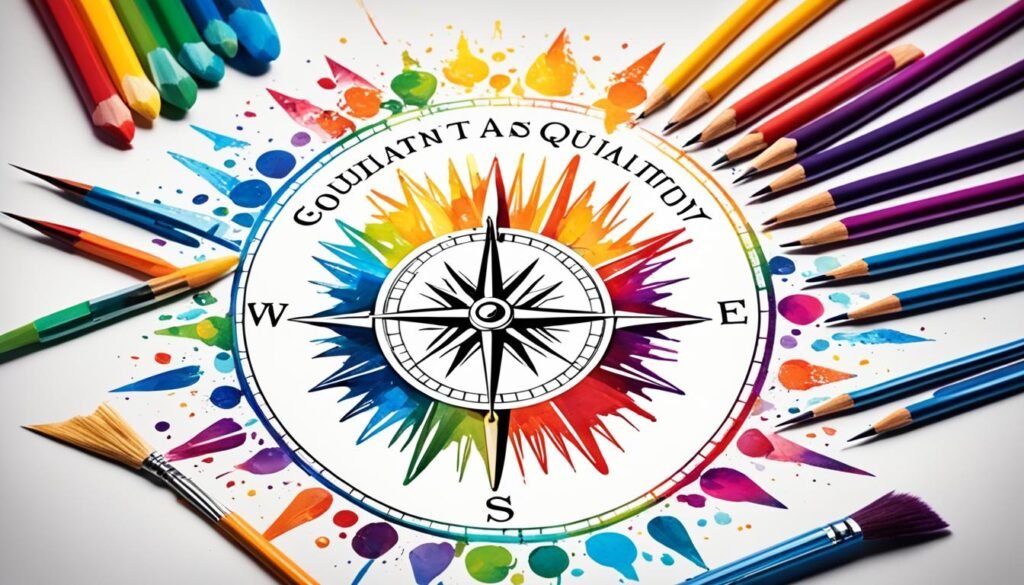
Crafting Artistic Mastery: The Role of Performance Training in Arts Education
Performance training plays a pivotal role in nurturing artistic mastery in music and arts education. Rigorous training and practice are essential for developing technical skills, artistic expression, and stage presence. By dedicating focused time and effort to honing their craft, students can unlock their full potential and excel in their chosen artistic disciplines.
Model Cornerstone Assessments for Student Achievement
Model cornerstone assessments provide valuable tools for measuring student achievement in music and arts education. These assessments serve as benchmarks against which students’ progress can be evaluated, ensuring that they are meeting the necessary performance standards. By implementing well-designed and comprehensive assessments, educators can gain insights into students’ strengths, areas for improvement, and overall growth.
Setting the Stage: Effective Practice Techniques
Effective practice techniques are fundamental to enhancing students’ learning and preparing them for successful performances. Through deliberate and strategic practice, students can develop their technical proficiency, refine their artistic expression, and build confidence in their abilities. By incorporating a variety of practice techniques, such as focused repetition, targeted problem-solving, and mindful reflection, students can optimize their practice sessions and optimize their overall artistic development.
Performance training is vital for aspiring artists to reach their full potential. With rigorous training, meaningful assessments, and effective practice techniques, students can cultivate artistic mastery and excel in their chosen art forms. Whether it’s music, dance, theater, or visual arts, investing in performance training can lay the foundation for a successful artistic journey.
The Intersection of Artistry and Technology: Creative Expression in the Digital Age
In today’s fast-paced digital age, artistry and technology have intersected in unprecedented ways, revolutionizing the landscape of music and arts education. Advancements in technology have opened up new avenues for creative expression and artistic collaboration, providing artists and educators with powerful tools to enhance their craft.
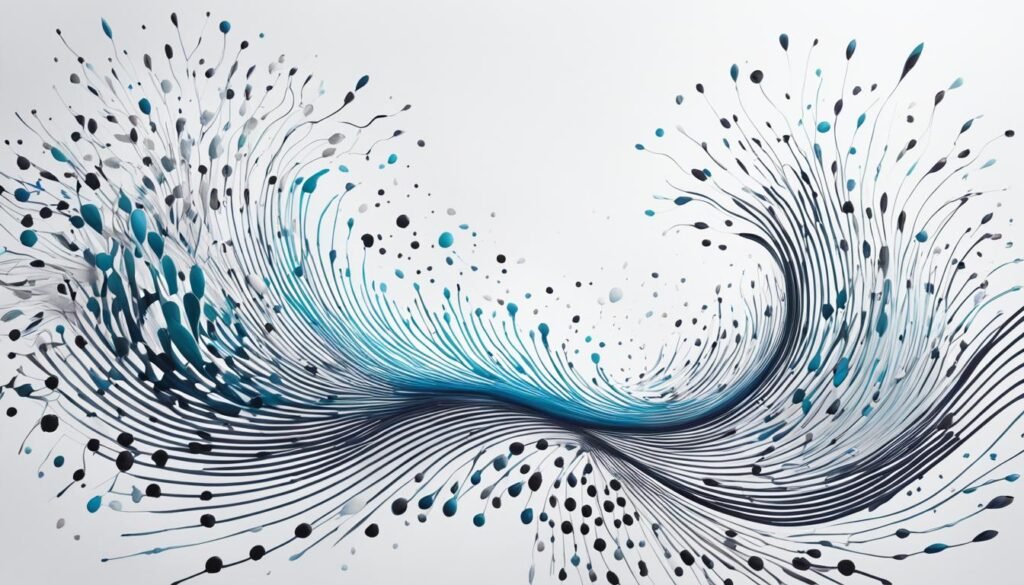
Technology enables artists to explore and experiment with innovative techniques, pushing the boundaries of traditional art forms. From digital painting and virtual reality installations to multimedia performances and interactive exhibits, the digital age has unleashed a world of possibilities for artistic expression.
One of the key benefits of integrating technology into music and arts education is the ability to engage students in interactive and immersive learning experiences. Digital tools and software empower students to explore their creativity, experiment with different artistic mediums, and collaborate with their peers, fostering a sense of community and shared learning.
However, embracing technology in the arts also comes with its challenges. Educators must navigate the vast array of digital tools and platforms available, selecting those that align with their teaching objectives and learning outcomes. They must also ensure that technology is used as a means to enhance creativity rather than replace traditional artistic techniques and practices. Striking a balance between artistry and technology is crucial to enable students to develop their artistic skills while harnessing the potential of digital tools.
The digital age has also brought forth new opportunities for showcasing and promoting artistic work. Artists can reach a global audience through online platforms, social media, and streaming services, expanding their reach and influence. This accessibility has allowed artists to connect with diverse communities, fostering cultural exchange and understanding.
As we navigate the ever-evolving digital landscape, it is imperative that music and arts education keep pace with technological advancements. By incorporating relevant digital tools and techniques into the curriculum, educators can empower students to embrace technology as a tool for creative expression and exploration. This integration not only enhances students’ artistic abilities but also equips them with essential digital literacy skills that are crucial in the modern world.
The intersection of artistry and technology in the digital age offers boundless opportunities for creative expression and artistic growth. By harnessing the power of technology, educators can nurture the next generation of artists, empowering them to push the boundaries of their craft and shape the future of the arts.
Advancing Global Awareness Through Music and Arts Learning Excellence
Understanding and Appreciating Cultural Diversity through the Arts
This section delves into the important role of music and arts education in advancing global awareness and promoting cultural diversity. Through the power of music and the arts, individuals can explore, understand, and appreciate different cultures and traditions.
As students engage with diverse forms of artistic expression, they develop a deeper understanding of the values, beliefs, and perspectives of people from around the world. By studying various cultural art forms, such as music, dance, visual arts, and theater, students gain insight into the rich tapestry of global cultures.
Arts education fosters an environment of inclusivity and respect, allowing individuals to transcend cultural barriers and build bridges of understanding. Through exposure to different cultural expressions, students learn to appreciate the beauty and uniqueness of diverse artistic traditions.
The arts provide a platform for cross-cultural dialogue, enabling individuals to connect and communicate with one another on a global level. By engaging in collaborative artistic projects, students from different backgrounds can collectively create meaningful works that celebrate cultural diversity.
Arts as a Vehicle for International Collaboration and Communication
Music and arts education play a vital role in fostering international collaboration and communication. In an increasingly interconnected world, it is essential for individuals to develop the skills to work harmoniously with people from diverse cultural backgrounds.
The arts provide a universal language that transcends linguistic and cultural barriers, enabling individuals to connect and collaborate on an international scale. Through artistic collaborations, students gain firsthand experience in navigating cultural differences and finding common ground.
By participating in international arts exchange programs, students can engage with artists from around the world, learn about their unique artistic traditions, and develop a global perspective. These experiences not only broaden their artistic horizons but also promote a sense of global citizenship and empathy for others.
Arts education highlights the importance of effective communication in creative endeavors. Students learn to express their ideas, emotions, and experiences through art forms that resonate with people from diverse backgrounds. They develop the ability to communicate and collaborate effectively, fostering a spirit of mutual understanding and cooperation.
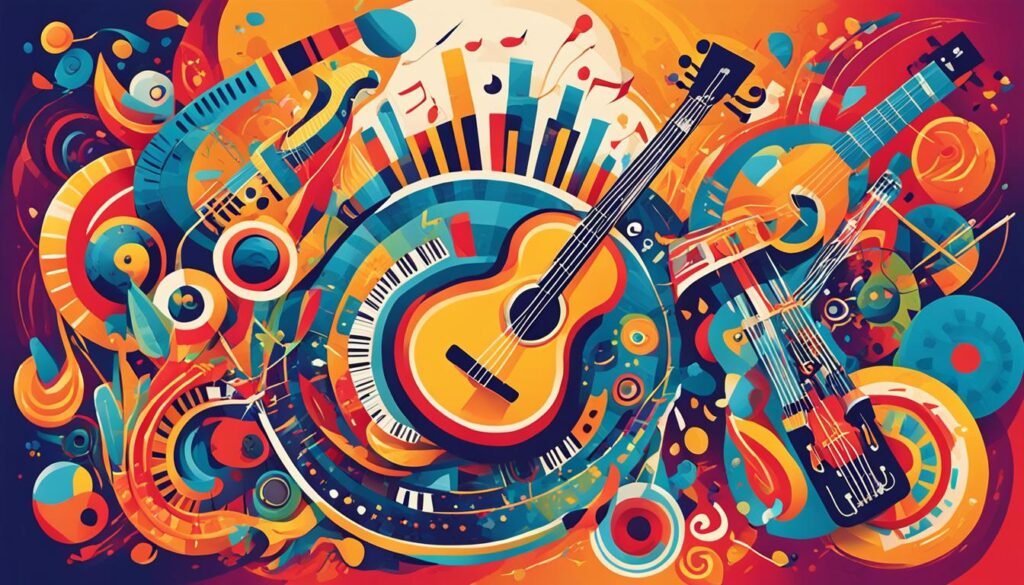
Environmental Influences: How Settings Impact Artistic Learning
In music and arts education, the settings and environments in which learning takes place play a significant role in shaping students’ artistic development. The physical spaces, such as classrooms, studios, and performance venues, have a direct impact on students’ engagement, creativity, and overall artistic learning experiences.
Exposure to well-designed and stimulating physical spaces can inspire students’ creativity, enhance their focus, and foster a sense of belonging. A spacious and well-equipped studio, for example, provides the necessary infrastructure for students to explore and experiment with different artistic mediums. The arrangement of furniture and the availability of resources can significantly influence students’ engagement with the learning process.
Social and cultural factors also greatly influence artistic learning outcomes. Community support, access to resources, and exposure to diverse artistic experiences contribute to the development of well-rounded artists. A supportive arts community can provide students with opportunities for collaboration, mentorship, and meaningful connections with practitioners in their field of interest. Access to resources, such as musical instruments, art supplies, and technology, empowers students to explore their artistic potential.
Furthermore, exposure to diverse artistic experiences, such as attending performances, visiting museums, and engaging with different artistic genres, broadens students’ perspectives and nurtures their creativity. These experiences expose students to different artistic styles, techniques, and cultural expressions, enhancing their artistic abilities and expanding their artistic horizons.
Creating conducive learning environments that stimulate artistic growth is crucial in music and arts education. By designing physical spaces that inspire creativity, fostering a supportive arts community, and providing access to diverse artistic experiences, educators can create environments that ignite students’ artistic passions and facilitate their artistic journey.
Visual Arts Instruction: Synthesizing Academic Excellence with Creative Processes
In visual arts instruction, academic excellence and creative processes come together to foster holistic learning. By integrating arts and academia, students gain valuable skills and insights that enhance their academic achievements. Visual arts education serves as a catalyst for critical thinking, problem-solving, and innovative approaches to learning.
Integrative Learning Strategies That Fuse Arts and Academia
Integrative learning strategies are key to connecting the worlds of arts and academia. These strategies encourage students to make meaningful connections between visual arts and academic subjects, leading to deeper understanding and interdisciplinary learning. For example, integrating art history with social studies helps students explore cultural perspectives and historical events through artistic expressions.
Furthermore, visual arts instruction can be leveraged to enhance mathematical conceptual understanding. By engaging in hands-on activities that involve shapes, patterns, and spatial relationships, students develop a visual and kinesthetic understanding of mathematical concepts, enabling them to grasp complex ideas with ease.
Leveraging Arts Education for Enhanced Academic Achievement
The impact of arts education extends beyond the artistic realm, positively influencing academic achievement as well. Studies have shown that students involved in visual arts instruction demonstrate enhanced cognitive abilities, including improved memory, attention, and problem-solving skills. Engaging in creative processes stimulates the brain, allowing for more effective learning and knowledge retention.
Moreover, visual arts education promotes integrative and holistic thinking, encouraging students to approach challenges from multiple perspectives. This comprehensive mindset fosters academic excellence by enabling students to analyze, synthesize, and apply knowledge across different subjects and domains.
| Benefits of Visual Arts Instruction | Impact on Academic Excellence |
|---|---|
| Enhancement of critical thinking and problem-solving skills | Improved cognitive abilities, including memory and attention |
| Fostering creativity and innovation | Stimulation of integrative and holistic thinking |
| Development of visual and spatial intelligence | Enhanced ability to analyze, synthesize, and apply knowledge |
| Promotion of self-expression and individuality | Increased engagement and motivation in academic pursuits |
Conclusion
Reflecting on the journey towards artistic learning excellence, we have explored the dynamic nature of music and arts education and its profound impact on students’ skill development and creative growth. Throughout this article, we have emphasized the importance of understanding the evolving landscape of music and arts education, adapting teaching practices to meet the needs of students, and cultivating the core elements that contribute to excellence.
As we envision the future of music and arts education, it is evident that continuous improvement and innovation will be crucial. Ongoing research, collaboration, and advocacy are necessary to ensure that all students have access to quality music and arts education. By embracing technological advancements, integrating interdisciplinary experiences, and nurturing the passion and persistence of students, we can further enhance their artistic journey.
In conclusion, the pursuit of artistic learning excellence is an ongoing endeavor that requires the dedication and commitment of educators, institutions, and the wider community. By empowering students through music and arts education, we can foster their creativity, critical thinking skills, and holistic growth. Let us continue to advocate for the importance of music and arts education and work towards a future where every student has the opportunity to unleash their artistic potential.
FAQ
What is the importance of music and arts education in achieving excellence?
What are some of the challenges faced by educators, students, and institutions in providing quality music and arts education?
How can music and arts education contribute to the holistic growth of students?
What role do teachers play in elevating music education and fostering artistic development in students?
How do national standards ensure quality arts education?
What is the role of performance training in fostering artistic mastery?
How does technology intersect with music and arts education?
How does arts education contribute to global awareness and appreciation for cultural diversity?
How do settings and environments impact artistic learning?
How does visual arts instruction synthesize academic excellence with creative processes?
Source Links
- https://wallacefoundation.org/sites/default/files/2023-08/Understanding-Excellence-in-Arts-Education.pdf
- https://www.nationalartsstandards.org/sites/default/files/Conceptual Framework 07-21-16.pdf
- https://destinyschoolofthearts.com/the-power-of-integration-benefits-of-a-school-offering-rigorous-academics-with-art-music-integration/
